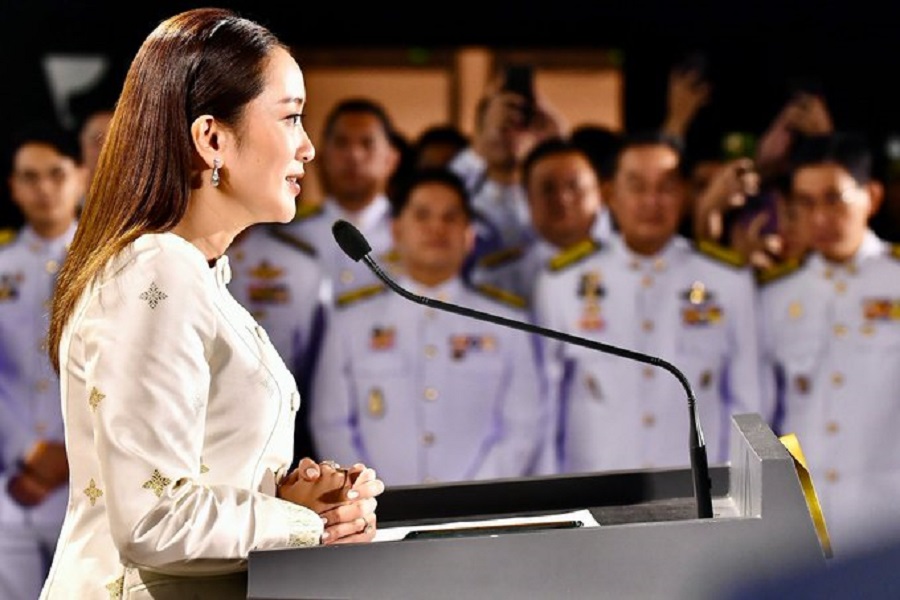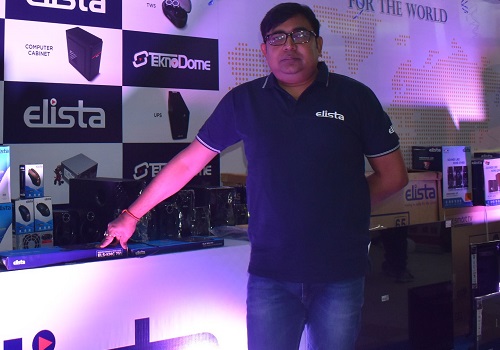Sahaj Fashions coming with an IPO to raise Rs 13.96 crore

Follow us Now on Telegram ! Get daily 10 - 12 important updates on Business, Finance and Investment. Join our Telegram Channel
Sahaj Fashions
- Sahaj Fashions is coming out with an initial public offering (IPO) of 46,52,000 equity shares of face value of Rs 10 each for cash at a fixed price of Rs 30 per equity share.
- The issue will open for subscription on August 25, 2023 and will close on August 29, 2023.
- The shares will be listed on NSE Emerge Platform.
- The share is priced 3.00 times higher to its face value of Rs 10.
- Book running lead manager to the issue is Khambatta Securities.
- Compliance Officer for the issue is Shilpi Agarwal.
Profile of the company
Sahaj Fashions is engaged in manufacturing of high standard fabric which is used for various purposes such as garments, home furnishings and industrial applications, etc. It has expertise in manufacturing of primarily cotton suiting fabric and cotton shirting fabric apart from polyster based and cotton-polyster blended fabrics. It also manufacture cotton yarn dyed fabrics which are according to it almost always in demand by the garment manufacturing industry. At present its sales has penetrated its home state of Rajasthan as well as some other states like Gujarat, Maharashtra and Delhi.
The company was established with an aim to manufacture of high standard textile fabric. Hence, the company purchased land in Kishangarh, Rajasthan to setup a manufacturing unit which it completed and the unit started commercial production on April 04, 2012 in a record time of 6 months from the date of laying the foundation stone.
In the year 2014, it exposed its product to international markets through Merchant Exporters in which it do not have to face the risk of forex fluctuation because it sells its products only to the India counterparts. In 2015, the company decided to enter into expansion with backward integration which is a pre-process of fabric weaving. As a result, the company installed and commissioned further machinery of Textile Preparatory (Sizing Machine Plant) in its manufacturing facility in Rajasthan thereby improving the quality and timely delivery of the orders.
Proceed is being used for:
- Meeting the working capital requirements of the company.
- Prepayment/repayment of certain borrowings availed by the company.
- General corporate purpose.
- Meeting the offer expenses.
Industry overview
India’s textiles sector is one of the oldest industries in the Indian economy. The industry is extremely varied, with hand-spun and hand-woven textiles sectors at one end of the spectrum, with the capital-intensive sophisticated mills sector at the other end. India is the world’s largest producer of cotton produces 61.6 lakh Metric Tonnes during 2021-22 which constitutes of 23% of world’s total cotton production. India is also the 2nd largest consumer of cotton in with estimated consumption of 57.5 lakh Metric Tonnes constituting 22% of world’s total cotton consumption during 2021-22. With increasing demand for textile, cotton industries are also expanding. Home textile companies in India are also leveraging strategic partnerships to strengthen their business operations and foothold in the country.
The size of India’s textile market stood at $223 billion in 2021, growing at a CAGR of 10.23% from 2016. The Indian textiles market is expected to be worth over $209 billion by 2029. India’s textile and apparel exports to the US, its single largest market, stood at 27% of the total export value in FY22. In September 2022, the Minister of Commerce and Industry, Consumer Affairs, Food and Public Distribution, and Textiles, Mr Piyush Goyal, advocated that India should take its textile exports to $100 billion by 2030, aided by the trade pacts with Australia and the UAE. In September 2021, the government approved an Rs 10,683 crore ($1.44 billion) production-linked incentive (PLI) scheme for the textiles sector. This will benefit the textile manufacturers registered in India. Incentives under the scheme will be available for five years from 2025-26 to 2029-30 on incremental turnover achieved from 2024- 25 to 2028-29. The scheme proposes to incentivise MMF (manmade fibre) apparel, MMF fabrics and 10 segments of technical textiles products.
The Government of India has earmarked a corpus of Rs 1,000 crore dedicated for research and development of the technical textiles sector. Ministry of Textiles endeavours to ensure adequate availability of cotton for the consumption of domestic spinning industry keeping in view accelerated investment which has gone into this sector, while the imports and exports of cotton remain free.
Pros and strengths
Technology: It has the international technology of looms for manufacturing of the fabric. The technology is suitable for manufacturing both type of fabrics viz. Cotton & Polyester and their mix such as polyester cotton blended, polyester viscose, etc. The updated technology also helps it to achieve cost efficiency as a result of higher production. It has machinery made in Japan and Germany.
Ability to cater huge demands: It caters the demand of fabric higher than its installed capacity since it also outsource the manufacturing of the fabrics on job work basis to reputed and well known units as per the requirements of the fabric. This helps it in achieving time bound delivery of the product to its customers.
Comprehensive product portfolio: It has a comprehensive portfolio of fabrics such as Cotton Shirting Fabric, Cotton Suiting Fabric, Cotton Lycra Fabrics and Polyester Uniform Fabric etc. It is capable of supplying all kind of fabrics to cater the wide quality demands of its clients. It is also well equipped to undertake the custom made order of the clients.
Risks and concerns
Dependent on third parties for logistics: Generally, the transportation cost and management is on the buyer of products in the area where it functions. It do not have an in-house transportation facility and it relies on third party transportation and other logistic facilities for its business activities including procurement of raw material from its vendors and suppliers and for transportation of its products in a few cases. For this purpose, it hires services of transportation companies. Additionally, availability of transportation solutions in the markets it operates in is typically fragmented. It does not enter into written documentation in relation to the transportation services it hires. It could be faced with transportation risks due to any loss or pilferage, which it may not be able to recover from its insurance coverage. Its production and profitability are dependent upon the availability of transportation and other logistic facilities in a timely and cost-efficient manner.
Face competition: The industry, in which it is operating, is highly and increasingly competitive and its results of operations and financial condition are sensitive to, and may be materially adversely affected by, competitive pricing and other factors. Competition may result in pricing pressures, reduced profit margins or lost market share or a failure to grow its market share, any of which could substantially harm its business and results of operations. There can be no assurance that it can effectively compete with its competitors in the future and any such failure to compete effectively may have a material adverse effect on its business, financial condition and results of operations.
High working capital requirement: Its business requires significant amount of working capital and major portion of its working capital is utilized towards debtors, inventories, security deposits, marketing and promotions, advance to suppliers, cash and cash equivalents. On an average, its debtors are realized in 5-6 months and it requires to maintain inventory of about 3-4 months. It has also availed sanctioned financing facilities from bank. Its inability to maintain sufficient cash flow, credit facility and other sources of funding, in a timely manner, or at all, to meet the requirement of working capital or pay debts, could adversely affect its financial condition and result of its operations.
Outlook
Incorporated in 2011, Sahaj Fashions is engaged in manufacturing of high standard fabric which is used for various purposes such as garments, home furnishings and industrial applications, etc. On the concern side, the industry, in which it is operating, is highly and increasingly competitive. There can be no assurance that it can effectively compete with its competitors in the future and any such failure to compete effectively may have a material adverse effect on its business, financial condition and results of operations
The company is coming out with an IPO of 46,52,000 equity shares of face value of Rs 10 each for cash at a fixed price of Rs 30 per equity share to mobilize Rs 13.96 crore. On performance front, the company’s total income increased by 16.35% to Rs 8,698.36 lakh in Fiscal 2022 from Rs 7,475.54 lakh in Fiscal 2021. Profit for the year increased by 30.37% to Rs 41.90 lakh in Fiscal 2022 from Rs 32.14 lakh in Fiscal 2021. Going forward, the company’s plans to increase sales of its products by increasing the number of markets by developing newer export avenues. Its strategy is to focus on increasing the width and depth of its product range as the company is planning to use the additional working capital to develop sheeting, exports, home furnishing markets etc.












 320-x-100_uti_gold.jpg" alt="Advertisement">
320-x-100_uti_gold.jpg" alt="Advertisement">











